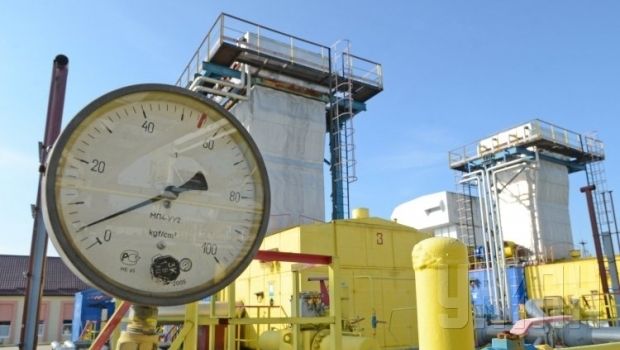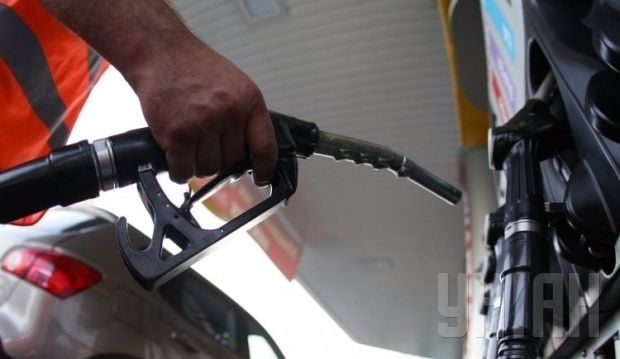
Ukraine’s energy sector: seeking new sources
An economic crisis caused by Russian aggression struck Ukraine in 2014. The resulting massive attack on Ukraine’s energy sector is one of the most important elements of Russia’s hybrid war against its neighbor.
2014 was the first year in which Ukraine became fully dependent on imports of all kinds of energy sources. As Russia triggered off the war in the Donbas, Ukraine was forced into importing coal and electric energy from Russia, additionally to the traditional imports of natural gas and petroleum products. Nuclear power stations, the basis of Ukraine’s energy system, are working at full capacity. Coal-hungry heat and power stations are forced to close some of their power generating units. The country is desperate to buy coal from overseas – South Africa and Australia. Prospects for raising Ukraine’s own production faded away after Russia’s annexation of Crimea and suspension of multibillion contracts with western energy giants that are now reluctant, due to the unstable situation, to invest in the exploration of Ukraine’s oil- and gas-fields.
Ukraine is rated among Europe’s top energy consumers. Despite a 14% decrease in consumption of natural gas compared to 2013, due to the stoppage of several industrial economy sectors, the country in 2014 still consumed 43 billion cubic meters of gas. Neighboring Poland, with a population of 38.5 million and the GDP three times greater than that of Ukraine, maintains a comfortable yearly level of consumption of gas of 18 billion cubic meters.
From this year on, Ukraine must seek alternative energy sources, while the new government must create conditions for substituting expensive imported natural gas. Ukrainian business should be given a real impetus to invest in the production of hydrocarbons in Ukraine to provide for economy’s needs in the future.
Gas under martial law
The country’s own production of natural gas, the key resource for Ukraine’s energy security, has been in steady decline since the annexation of Crimea. In the last eleven months of 2014, production shrank by 4.2 percent – down to 18.1 billion cubic meters. Ukraine has lost a major natural gas producer, Chernomorneftegaz, which used to produce more than 1.5 billion cubic meters of natural gas a year on the Black Sea shelf and had plans to produce 3 billion cubic meters by 2015, making Ukraine the regional leader in the Black Sea basin.
Without Chernomorneftegaz, the country’s 2014 level of natural gas production are predicted to stay at 19.7 billion cubic meters, which is still only 3.5 percent short of the 2013 results due to the sharp increase of production by private companies, by more than a third, which compensated for most of the losses due to the annexation, with output of 2.7 billion cubic meters.
However, 2015 does not look so rosy for private producers, as parliament has approved the government’s proposal to double the taxation of private natural gas producers in an effort to find more revenues to fill the budget.
Besides, this fall, the government handed back a monopoly to Naftogaz for supplying natural gas to all major industrial consumers.
Private producers say that increasing tax pressure stunts the growth of their field, while the government justifies its move with the need to find money to resist Russian aggression.
Valeriy Demchyshyn, the country’s energy minister, acknowledged the raise of tax pressure on private business in an interview with UNIAN, but also called for finding a mode of compromise between the players on the market.
Meanwhile, the major international players left Ukraine at the end of 2014, stripping the country of the promised multibillion investments.
Reverse flows from Europe
In 2014 Ukraine started to import natural gas from Europe in substantial amounts while imports from Russia hit historic lows.
Since September, Ukraine has been receiving one billion cubic meters of natural gas monthly from Slovakia, and supplies might increase up to 15 billion cubic meters a year starting January 2015. From June to December, Ukraine did not import gas from Russia’s Gazprom, while imports from EU countries reached approximately five billion cubic meters.
The supply of Norwegian gas by Statoil since October 1, 2014 is seen as an important breakthrough as the prices are more favorable than those of Gazprom, according to Ukrainian Prime Minister Arseniy Yatseniuk. According to the State Service for Statistics, the October price for Norwegian gas was $264.50 per 1,000 cubic meters, while Russian gas cost $378.
The service’s data also shows that in 2014 Ukraine imported natural gas from Germany, Hungary, Slovakia, and even from Switzerland and Luxemburg at the prices lower than those offered by Russia.
In midsummer 2014, Ukraine’s government engaged in a price row with Gazprom, trying to revise the shackling agreement of 2009. One of the lawsuits against Gazprom currently lodged at the Stockholm Arbitration Chamber concerns the revision of contract for transit of natural gas via Ukrainian territory to the European Union. Official Kyiv underlined that Gazprom has not been fulfilling its obligations under this contract to transport no less than 110 billion cubic meters of natural gas through Ukraine’s pipelines. In just eleven months of 2014, transit dropped by 25 percent – down to 58 billion cubic meters.
Arbitration may last until the summer of 2016, but nevertheless, Ukraine must preserve its status as the major transit country of Russian natural gas to Europe so that western investors do not lose interest in Ukraine’s gas transportation system.
Hunger for coal

In 2014, Ukraine lost control over the industrial Donbas, which has for a century been the main source of hard-coal, vital for producing most of the country’s energy. Military action in the Donbas forced Ukraine to seek fuels on foreign markets. The state company Ukrinterenergo started to receive coal from South Africa this fall. However, due to a corruption scandal, supplies halted, and Ukraine managed to buy only one fourth of the contracted one million tons, while Rinat Akhmetov’s DTEK, a major energy player, “picked up” the rest. Besides, DTEK started importing coal from Australia starting November 2014. However, the amounts of coal imported from overseas do not cover the losses from the war in the Donbas, which are estimated at 12 million tonnes according to Ukraine’s energy ministry.
In the wake of unresolved issues with coal supplies and the stoppage of half of the country’s power units, Ukraine is attempting to secure imports of electrical energy from Russia, Moldova and Belarus. Almost every Ukrainian region has already suffered from rolling blackouts. Nuclear blocs built back in the Soviet Union are forced to work at top capacity, with the record 60 percent share in country’s energy production.
If the temperature falls, Ukraine might suffer from even more long-term blackouts, said Arseniy Yatseniuk at one of the last meetings of the Ukrainian government in 2014.
Cheap oil is no help

The price of oil dropped in 2014 to around $60 a barrel after supply started to seriously outstrip demand. This drop may affect Ukraine in many ways: The price for imported gas may fall as its costing formula is based on the oil price; and Russia may lose interest in military action in Ukraine’s east when losing the budget-feeding petro-dollars. Meanwhile, Ukrainian motorists expect the prices for automobile fuel to drop as well.
However, the devaluation of Ukrainian hryvnya may frustrate those expectations. The national market of petroleum products is 85% dependant on imports. Having less currency to spare, the traders buy less fuel abroad, thus creating a deficit, which in its turn stimulates price rises, while rising prices cause a decrease in consumption. The prices for petroleum products may continue to rise in 2015 along with the devaluation of Ukrainian hryvnia.
The end of the era of traditional fuel
As Ukraine remains Europe’s least energy-efficient country, the key task of the new government is to a achieve radical reduction of consumption of traditional fuels and to switch the economy to alternative, renewable energy resources. Ukraine actually has a lot of potential in this field – water-power plants, biomass, etc.
According to the Service for energy efficiency, Ukraine needs EUR 15 billion by 2020 to raise the share of renewables to 11% from the existing level of 3.8%, which will lead to a reduction of natural gas consumption by nine billion cubic meters per year.
Building water-power plants is seen as one of the most promising areas in the near future. Ukraine’s water-power system makes up only 8% of the capacity of the country’s united energy system. Reconstruction and technical refinements of waterworks are needed for the further development of the field, but international financial institutions are ready to invest hundreds of millions of Euros. For example, the World Bank and the European Investment Bank have announced that they would provide $500 million financing each for the project of the Kaniv water-accumulating power plant.
There is a great deal yet to do, but at least the foundations for energy reform in Ukraine have already been laid.
Artyom Belousov (UNIAN)

